A stair is a series of steps which is arranged to connect different floors of a building.
Stairs are provided in all types of buildings, which are of different types that are designed and used based on the location and usage.
Types of Stairs
Stairs are classified into two different types - one is based on the shape, and the other is based on the materials used.
Types of Stairs on the Basis of Shape
Based on shape, different types of stairs which are in general use are discussed below:
Straight Stairs
Long, straight stairs are provided only if the staircase hall is long and narrow. These stairs are commonly used as an emergency exit from buildings such as cinema halls.
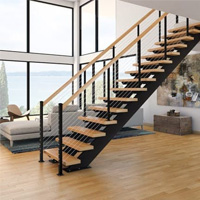
In this type of stairs, there is no change in direction steps are straight, and they may be in single or multiple flights with landing between the two flights.
Dog-legged Stairs
This type of stairs consists of two straight flights with 180° turn between them. It is mostly used in residential buildings.
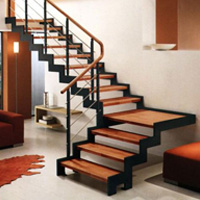
Turning Stairs
This type of stairs may turn in various forms which depend on the availability of space. Examples of such stairs are:
Quarter-turn Stairs: These types are preferred when there is a need for a change of direction by 90°. The change in direction may be followed by providing either by quarter-space landing or by providing winders.
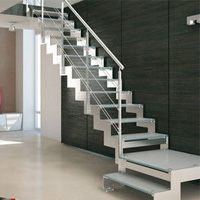
Bifurcated Stairs: This type of stair is provided in modern public buildings. In these stairs, the bottom flight is wide which is divided into narrow flights from both sides of the landing.
Three-quarter Turn Stairs: It is also known as open newel stair. This type of stairs is provided with a change in directions by 270°, i.e., the direction is changed three times.
Geometrical Stairs
These stairs are similar to the open-newel stair except that the well formed between the two adjacent flights is curved. They may be of any geometrical shape and are also called as continuous stairs.
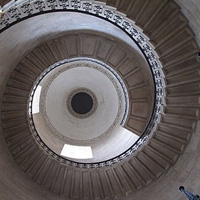
Continuous handrail is recommended in such stairs.
Spiral Stairs
These stairs are also known as circular stairs or helical stairs which are commonly used in emergency exits.
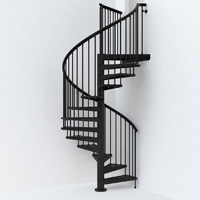
In this type, the sequences of steps are arranged in the form of a spiral and are usually provided where the space available for stairs is limited.
Multiple Flight Stairs
It is an open-well type of stair which has four flights with flight turn of 90°, provides an excellent view of the building. This type of stairs is commonly used in multi-storey buildings and commercial complexes.
Types of Stairs on the Basis of Materials Used
Different materials are used for the construction of stairs like timber, stone, brick, steel or cast iron, plain concrete or reinforced cement concrete (RCC). They are classified based on the materials used for construction.
Stone Stairs
Stone stairs are heavy and require strong supports. They are preferred for threshold; approach to basements, heating chambers, and in ashlar masonry buildings. They are widely used in places where ashlar stones are readily available.
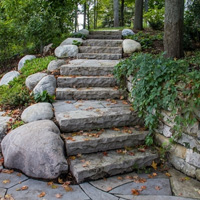
Stones that are hard, non-absorbent and weather resistant are preferred to avoid danger as they become slippery on use of a regular basis. The following types of stone steps are adopted:
- Rectangular steps with rebated joint
- Spandril steps
- Tread and riser steps
- Cantilevered tread steps
- Built-up steps
Timber Stairs
Timber stairs or wooden stairs are light and easy to construct but are very poor in fire resistance. These stairs are generally used in residential buildings and most preferred in areas where abundant wood is available.
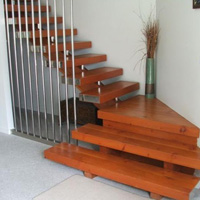
Well-treated fire-resistant hardwood of proper thickness should be used, and it should be free from fungal decay, insect attacks and other defects. Timber stairs are used only in low-rise buildings.
Brick Stairs
Brick stairs may be of solid masonry construction with arches provided in the lower portion. Entrance steps form a typical brick stair.
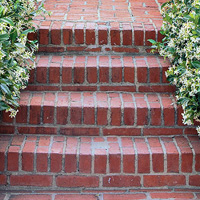
These steps need a facing with a coat that can resist wear and tear as concrete finished with mortar. The treads and risers of the brick stair should be finished with the suitable flooring material.
Steel Stairs
Mild steel or iron cast stairs are of a special type, used in factories, workshops, godowns, etc. These are made of pre-stressed sheet steel that is strong and fireproof. These stairs are also called lubricated stairs.
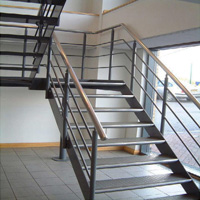
The disadvantage of these stairs is that they produce a lot of noise when used and also look unattractive. Therefore, they are not preferred in residential buildings. Cast iron is commonly used for spiral stair types.
Concrete Stairs
Plain concrete stairs are preferred in place of stone stairs these days. These steps are mostly of spandril type and used for the entrance to the buildings.
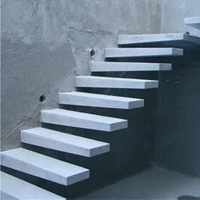
Nowadays, RCC stairs are widely used in almost all types of buildings, as they offer a number of advantages compared to other types. They are:
- They can be cast into any required shape and size.
- They have excellent resistance to wear and fire better than any other material.
- They give a highly attractive appearance.
- They are very durable and easy to maintain.
- They are less noisy.
- They can be easily rendered non-slippery.
- They can be designed to accommodate greater widths and longer spans.
The thickness and reinforcement required for the stairs can be suitably determined by the design engineers.
In order to have a comfortable ascent and decent, proper design has to be stipulated as regards to the size of stairs, slope and landing space.
Also Check: Types of False Ceiling Designs & More


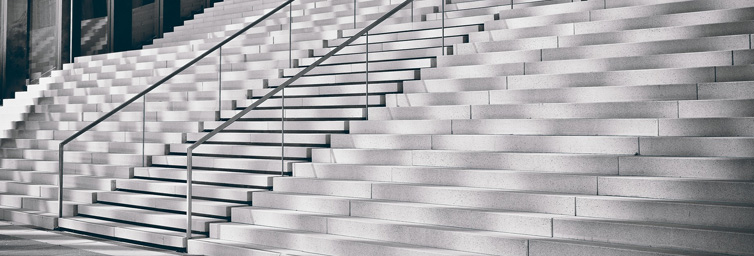















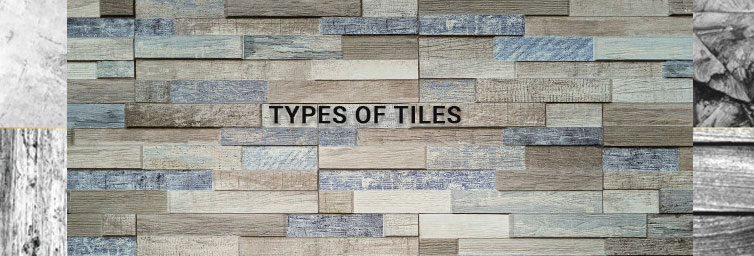


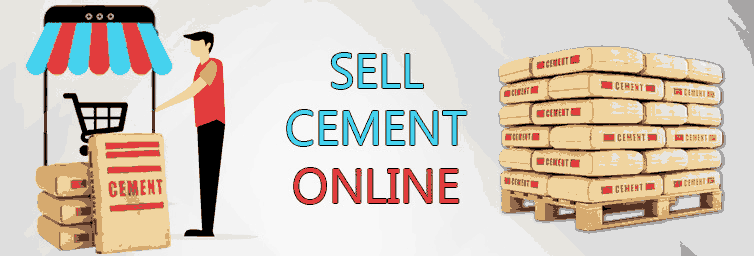


Anshu
posted on Sep 4, 2021 12:20:10 PM